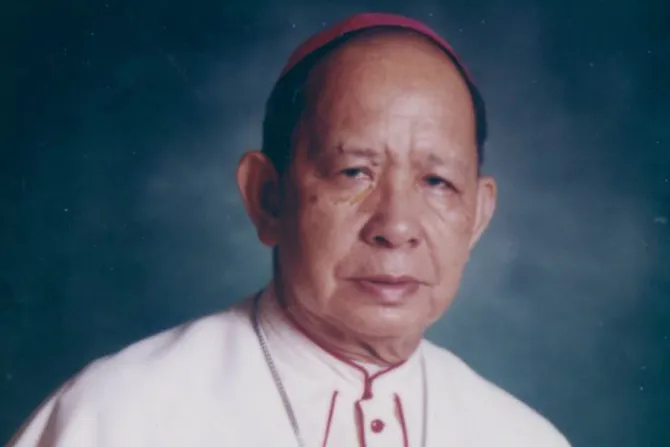Pasig, Philippines, Aug 26, 2015 / 11:01 am
Catholics in the Philippines are mourning Wednesday's death of Bishop Francisco San Diego, who founded the Diocese of Pasig in 2003 and led it until his retirement in 2010.
Bishop San Diego, who was 79, died the morning of Sept. 26 of cardiac arrest while in his sleep at Cardinal Santos Hospital, the Pasig diocese announced.
His successor as Bishop of Pasig, Mylo Vergara, received his body into the Cathedral of the Immaculate Conception saying, "Indeed Bishop San Diego received the victory of God … he entered his cathedral not as a corpse but as a soul welcomed by God to eternal life."
The Pasig diocese is saddened with the loss of Bishop San Diego, who had recently participated in a Mass of Thanksgiving for the 12th anniversary of the diocese's founding, despite his frail health. He had had diabetes, and was recently diagnosed with lung cancer.
Tributes have begun flooding social media in the Philippines, and his body is being kept in the Pasig cathedral so that he can be mourned by the faithful. Bishop San Diego's funeral Mass will be said Aug. 29, and his body interred at the cathedral.
Bishop San Diego was born in 1935 in Obando, north of Quezon City. He studied Latin at Our Lady of Guadalupe Minor Seminary, and later completed his philosophical and theological studies at San Carlos Seminary in Makati. He was ordained a priest of the Manila archdiocese in 1963.
As a priest, he worked in parishes, on Manila's metropolitan marriage tribunal, and as a seminary professor. In 1979 he earned a doctorate in canon law from the University of Santo Tomas, and was named a monsignor in 1981.
In 1983 he was consecrated a bishop, and appointed coadjutor vicar apostolic of Palawan; he succeeded as vicar apostolic in 1987. He was transferred to the Diocese of San Pablo in 1995.
When the Diocese of Pasig was established out of the Archdiocese of Manila in 2003, he was appointed its first bishop. He served as its ordinary until retiring in 2010 at the age of 75. While he was the diocesan bishop, he facilitated the improvement and expansion of its cemetery, and created a retirement plan fund for its clergy.


